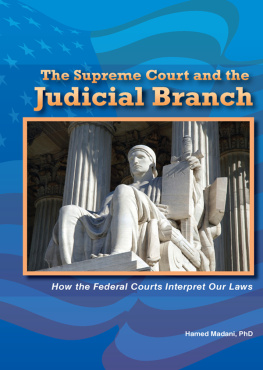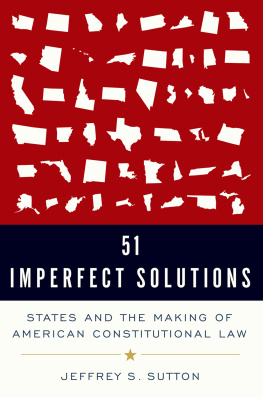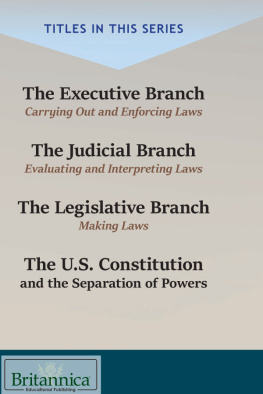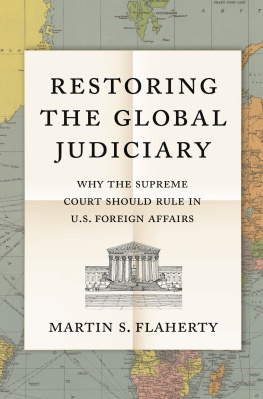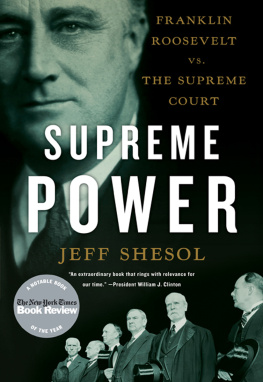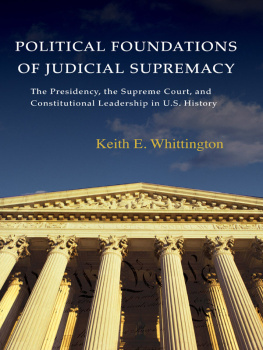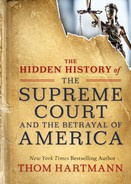
The Supreme Law of the Land
The Supreme Court of the United States decides which laws are constitutional. The federal judiciary is more then just the Supreme Court, more than just the judges of the federal and district courts. Learn about the history and creation of the federal judiciary, its organization and responsibility, and what the judicial branch does today.
About the Author
Hamed Madani, PhD, is a professor of Political Science at Tarrant County College in Texas. This is his first book for Enslow Publishers, Inc.
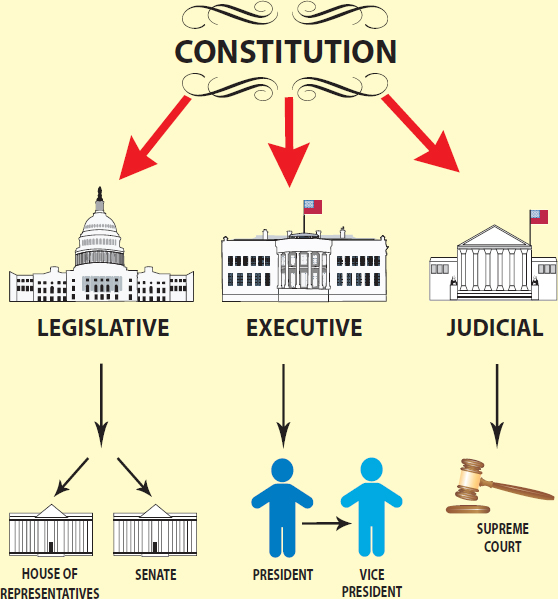
Image Credit: Enslow Publishers, Inc.

Image Credit: Corel Corporation
The United States Supreme Court made a historic decision during the controversy over the 2000 presidential election. The decision significantly affected the outcome of that election by stopping a court-ordered recount in Florida. The Courts decision resulted in George W. Bush's becoming the forty-third president of the United States.
The presidential election took place November 7, 2000. On this day, voters in all fifty states of the United States voted to elect a new president. However, the members of the electoral college, not the voters, officially decide who should be the president. The electoral college is a body of individuals chosen in fifty states and Washington, D.C., who elect the president and vice president. The members of the electoral college usually cast their votes according to whom the majority of citizens in their state voted for.
To become the next president, a candidate has to have 270 out of 538 votes in the electoral college. The state of Florida had twenty-five electoral votes in 2000. To receive its twenty-five electoral votes, a presidential candidate must win the popular vote in Florida. However, the results of the Florida popular presidential election were very close. In fact, Bush was not declared the president until several weeks after the day of election.
In Florida, approximately 6 million people voted. Bush received 2,909,135 votes. Al Gore, Jr., secured 2,907,351. Some people voted for other candidates. There was a difference of 1,784 votes or one-half of a percentage point between Bush and Gore. Yet there is still great uncertainty about the vote count. Florida election law allows an automatic recount of all ballots when the total vote difference is less than one percent. So, ballot recounts started immediately. However, the Florida secretary of state, Republican Katherine Harris, refused to accept any recount returns after November 14. Based on recount returns, Bushs lead was reduced from 1,784 to 930.
Some counties failed to complete their manual recounts on time. Thus, Harris certified Bush as the winner. However, Gore demanded continued manual recounts of ballots at least in the four largest and Democratic counties. These were Volusia, Palm Beach, Broward, and Miami-Dade counties. Gores lawyers first argued their case before a county court trial judge. The judge dismissed Gores lawsuit. However, the case was quickly appealed to the Florida Supreme Court. The Florida Supreme Court ordered manual recounts of all ballots.
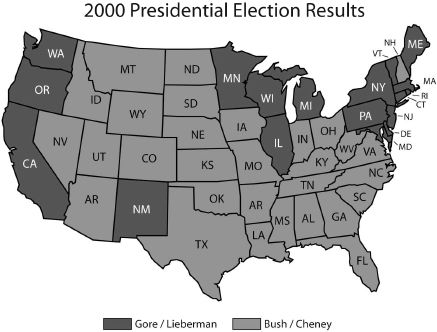
Image Credit: Enslow Publishers, Inc.
Bushs team of lawyers appealed the decision of the Florida Supreme Court to the United States Supreme Court. The national Court was to decide whether the Florida Supreme Courts ruling was constitutional. The justices first ordered a stop to the recounts. Then, the Court sent the case back to the Florida Supreme Court. The United States Supreme Court sought clarification about the Florida courts decision.

Image Credit: Corel Corporation
The entrance to the Supreme Court building, located in Washington, D.C. Many important judicial decisions have been handed down in this building.

Image Credit: Enslow Publishers, Inc.
More than 105 million Americans cast their votes for president on Election Day, 2000. Neither of the two leading candidates could declare victory. They were Albert Gore (a Democrat, right) and Texas Governor George W. Bush (a Republican, left). Gore had the most popular votes in the nations total. But neither Gore nor Bush had enough electoral votes to win.
However, the Florida Supreme Court ignored the order of the United States Supreme Court. It ordered the continued recount of all votes, especially undervotes. Undervotes were ballots discovered during the recounts that the voting machines failed to register a vote for president. It instructed the election officials that the intent of the voter should be the standard for deciding how to count a ballot.
The Bush lawyers immediately appealed the second decision of the Florida Supreme Court to the United States Supreme Court. By now, more than a month had passed without the world's knowing who the next United States president would be. The only thing certain was that Gore had won the popular national vote. But the election depended on the outcome of the electoral votes in Florida. Once again, the United States Supreme Court accepted Bushs appeal.
The Court delivered its decision late in the evening of December 12, 2000. The Court stated, The use of standardless manual recounts violates the Equal Protection and Due Process Clauses of the United States Constitution. This meant that the judgment of the supreme court of Florida was reversed.
The 54 Supreme Court decision appeared to follow political lines. Five conservative-leaning members of the United States Supreme Court voted in the majority. Their votes certified Bush as the winner of Floridas twenty-five electoral votes. Four liberal-leaning members of the Supreme Court supported Gores position. They argued that the United States Supreme Court should not interfere with the Florida Supreme Courts decision. Three members of the United States Supreme Court (William Rehnquist, Clarence Thomas, and Antonin Scalia), each of whom voted with the majority, argued that the recount of ballots was unconstitutional. Their reasoning was that the Florida Supreme Courts decision made a new election law. Lawmaking is the responsibility of the state legislature, not the judiciary. Thus the United States Supreme Court ended the 2000 presidential election contest. Gore accepted defeat on December 13, 2000.
Courts are important institutions in American society, deeply involved in the life of the country and its people. Courts are responsible for resolving certain disagreements. And disputes when people sue each other in over contracts, personal injuries, and other such matters. Courts try people who are accused of violating societys rules by committing crimes.
The Bushv.Gore Supreme Court decision shows that Americas courts have another important function as well. The function has to do with affecting policy. Alexis de Tocqueville, a Frenchman who visited the United States in the early 1800s, made the following remarks with regard to this function of the courts: There is hardly a political question in the United States which does not sooner or later turn into a judicial one.
Next page
